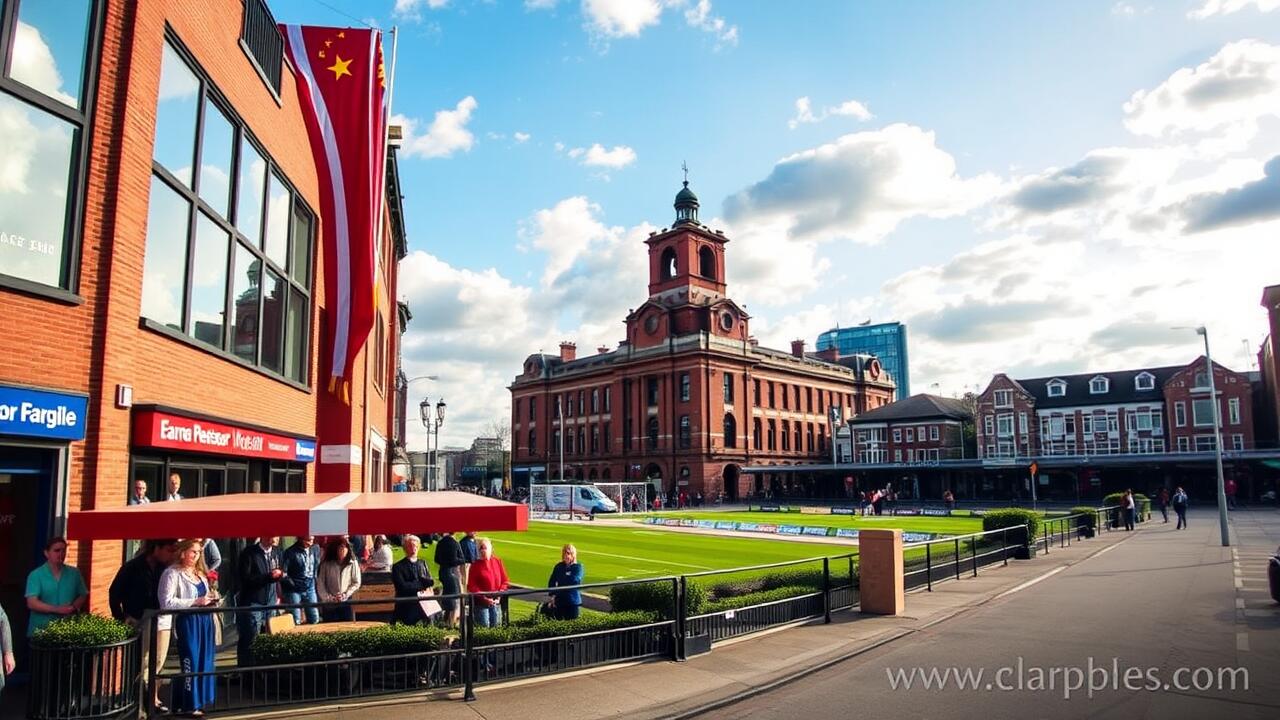City infrastructure improvements
Water Management Solutions
In the bustling tapestry of urban life, efficient water management emerges as a linchpin, weaving together sustainability and reliability in a delicate balance. Imagine cities harnessing the bounty of rainwater through harvesting systems—an ingenious way to wean off traditional water sources! Picture treatment facilities transformed by cutting-edge green technology, elevating the quality of water that whispers back into nature’s embrace.
But wait, there’s more! Visualize permeable materials integrated seamlessly into the very fabric of urban design—these unsung heroes not only bolster groundwater recharge but also quench surface runoff, playing a pivotal role in alleviating flooding woes when skies unleash their fury.
Enter innovations in smart water management systems: dynamic networks pulsating with real-time data at our fingertips. Sensors lie dormant yet vigilant, ready to spring into action at the first sign of leaks—a game-changer that can drastically curtail water loss and optimize precious resources. And let’s not overlook data analytics—the cerebral backbone guiding informed decision-making for equitable water allocation and preemptive measures against looming shortages.
By embracing these forward-thinking initiatives, cities stand poised not just to protect their dwindling water reserves but to flourish as champions of environmental health in an increasingly unpredictable world.
Ensuring Reliable Access and Environmental Protection
Securing a consistent water supply—oh, it’s no simple feat! It demands a tapestry woven with intricate threads of accessibility and environmental stewardship. Picture this: modern techniques, flaunting cutting-edge marvels like smart meters that whisper secrets about consumption and automated leak detection systems that act like vigilant sentinels in the shadows of our distribution networks. These technological wonders do more than just trim down the losses; they ensure swift repairs dance into action, guaranteeing communities are not left parched.
But wait! There’s more to this narrative—a vibrant cast of green infrastructure elements stepping onto the stage. Think rain gardens bursting with life, permeable pavements soaking up every drop—they’re pivotal players in the grand scheme of stormwater management. They stand guard against pollution, preventing nasty contaminants from infiltrating our precious waterways.
Yet amid all this innovation lies an essential truth: safeguarding our environment is a relentless journey requiring unwavering commitment to sustainable practices throughout every facet of water management. Regulatory frameworks? Indeed! We must craft them carefully to strike a harmonious balance between urban expansion and ecological integrity. Initiatives zeroing in on water quality monitoring serve as early warning systems for contamination threats, equipping us with tools for proactive defense against health hazards.
And let’s not overlook public education campaigns—they wield immense power! By igniting awareness about the critical need for conservation and active participation in local ecosystems’ protection efforts, we can cultivate a community spirit around water resources that flourishes vibrantly over time. The story continues…
Public Safety Enhancements
Urban areas are tangled in a web of challenges when it comes to public safety. As crime rates surge and the labyrinthine nature of city life unfolds, the need for cutting-edge technology has become an imperative in our urban jungles. Cities are embracing smart surveillance systems—those marvels that leverage artificial intelligence to sift through real-time data like a digital detective on high alert. These tech-savvy solutions arm municipalities with powerful tools to scrutinize public spaces with sharper eyes than ever before. With high-definition cameras sprouting up alongside citizen reporting apps, cities are not just aiming; they’re setting their sights on quicker response times and bolstered overall safety.
But wait! It’s not all about algorithms and cameras. The merging of community policing initiatives with these technological advancements creates a rich tapestry—a multi-layered approach—to urban safety that pulsates with life. By nurturing genuine relationships between police officers and local neighborhoods, cities can cultivate trust, breathe vitality into community involvement, and weave together strands of cooperation that bind them closer. This dynamic strategy ensures that measures for public safety aren’t merely dictated by data but resonate deeply with the heartbeats of the communities they serve. Enhanced protocols for safeguarding citizens, intertwined with active engagement from residents themselves, forge a path toward a more secure environment where everyone plays an integral role in shaping their shared space.
Integrating Smart Surveillance into Urban Areas
The infusion of smart surveillance systems into urban landscapes not only bolsters public safety but also revolutionizes security protocols in ways that are both fascinating and complex. Picture this: a network of high-definition cameras, fueled by artificial intelligence and real-time data crunching, vigilantly scanning bustling streets and plazas. It’s like having an ever-watchful eye—one that learns and adapts through machine learning algorithms—capable of picking up on suspicious behaviors with uncanny precision. Municipalities can swiftly alert law enforcement, enabling rapid responses to incidents as they unfold. This technological deployment could be a game-changer for crime rates, ushering in a proactive paradigm for managing urban safety.
But wait, there’s more! Beyond just the cold numbers of crime statistics lies an intangible benefit: the cultivation of a reassuring atmosphere for residents and visitors alike. The mere presence of these advanced systems can act as a deterrent against would-be criminals while simultaneously nurturing trust between communities and their local authorities. Yet it’s crucial to navigate the murky waters of privacy concerns; that’s where robust governance frameworks come into play, dictating the ethical use of these surveillance technologies. Regular audits coupled with community dialogues create pathways to transparency in operations—a delicate balancing act between ensuring security and respecting individual rights as cities adapt to new realities in public safety management.
Community Engagement in Infrastructure Projects
Infusing community engagement into infrastructure endeavors doesn’t just sprinkle a little transparency dust; it ignites trust between city officials and the very residents they serve. This dynamic approach invites stakeholders to unleash their thoughts, diving deep into meaningful dialogues about what their neighborhoods truly need and prioritize. Picture this: public meetings buzzing with conversation, surveys collecting sentiments like fireflies in jars, and workshops where diverse voices rise in harmony—all working together to ensure everyone has a seat at the table.
When communities are woven into the fabric of planning processes, municipalities can craft infrastructure upgrades that resonate with the unique desires and needs of their populations. The fruits of this inclusive labor? A robust swell of community support for projects that might otherwise flounder. When residents sense that their insights hold weight—when they’re not just whispering into the void—they’re much more inclined to rally behind local improvements.
And let’s not overlook how this collaborative ethos acts as a balm for potential conflicts during implementation phases; it softens opposition like warm sunlight on frost. Cultivating a culture rooted in engagement doesn’t merely enhance project efficacy—it stirs up a profound sense of ownership among community members, ultimately paving pathways toward urban spaces that teem with life and resilience!
Gathering Public Input for Effective Planning
When it comes to shaping urban infrastructure, weaving public input into the planning process is absolutely crucial—like stitching a vibrant tapestry from the threads of community voices. Imagine this: residents engaging through surveys, lively public forums, and hands-on workshops; such efforts ignite a spark of ownership and responsibility among all stakeholders involved. This symbiotic dance between planners and citizens doesn’t just uncover the unique needs and concerns swirling within the community—it also builds an unshakeable trust bridge stretching across the often-turbulent waters separating everyday folk from government entities.
But wait! There’s more! To truly amplify this engagement symphony, effective communication channels are non-negotiable; they must be established with precision to ensure that every voice finds its echo in the conversation. Enter digital platforms—a veritable treasure trove for participation—where feedback flows freely and vital information is just a click away. By rolling up their sleeves alongside the community, planners can craft solutions that resonate deeply with residents’ expectations and dreams. The result? Projects that blossom not only in functionality but also enhance life’s very essence in bustling urban landscapes. Isn’t that what we strive for?
| Community Engagement Method | Description | Benefits |
|---|---|---|
| Surveys | Online or paper-based questionnaires to gather resident opinions. | Allows for broad input and easy analysis of community preferences. |
| Public Forums | Open meetings where residents can discuss concerns and ideas. | Encourages dialogue and builds community trust through transparency. |
| Workshops | Interactive sessions where residents collaborate on planning ideas. | Fosters creativity and ownership in the planning process among participants. |
| Digital Platforms | Websites or apps for easy access to information and feedback options. | Enhances accessibility and increases participation rates among tech-savvy residents. |
Funding and Investment for Urban Improvements
Investing in urban infrastructure? Absolutely essential for elevating city life! When funds are allocated wisely, the results can be transformative: think revamped transportation networks, upgraded utilities that actually work, and vibrant community spaces that breathe life into neighborhoods. The beauty lies in diverse funding sources—government grants, enticing tax incentives, and those avant-garde financing models—all coming together to bring these ambitious projects to fruition. A meticulously crafted financial strategy doesn’t just tackle urgent needs; it lays down a framework for enduring growth and resilience in our ever-evolving urban landscapes.
And then there’s the buzz around public-private partnerships (PPPs)! These dynamic alliances have surged forward as a clever way to fund urban enhancements. By harnessing the unique strengths of both public entities and private investors, cities can supercharge resource optimization and accelerate project timelines like never before. With this collaborative approach, municipalities can break free from tight budget constraints while boosting efficiency during execution. The outcome? A heightened level of service delivery across crucial sectors—paving the way for a more sustainable future in our bustling cities!
Exploring Public-Private Partnerships
The interplay between public institutions and private enterprises has blossomed into a crucial strategy for urban infrastructure evolution. These alliances, oh how they sparkle with potential! They enable the amalgamation of resources and expertise, smoothing the path for projects that might otherwise stumble over funding hurdles or logistical labyrinths. By harnessing the energy of private investment, cities can turbocharge their efforts to roll out vital enhancements—keeping infrastructure in sync with surging demands and ever-shifting technologies.
But wait! There’s more than just financial backing at play here; these public-private partnerships are hotbeds of innovation as well. Private companies often waltz in with fresh perspectives that elevate project design and execution to new heights, resulting in outcomes that are not only efficient but also sustainable—like a green thumb nurturing a vibrant garden amidst concrete jungles! This collaborative tapestry weaves together immediate infrastructural solutions while simultaneously fortifying long-term resilience—a sturdy bedrock upon which future urban challenges can be met head-on.
Future Trends in City Infrastructure
As urban populations swell and climate challenges loom ever larger, cities are diving headfirst into resilient designs that prioritize sustainability and adaptability. Picture this: green infrastructure sprouting up everywhere—permeable pavements and lush green roofs becoming the norm, all in a bid to stave off flooding while boosting biodiversity. Urban planners are weaving nature-based solutions directly into their blueprints, empowering cities to tackle stormwater management like pros while simultaneously cleansing the air we breathe. Meanwhile, cutting-edge materials and construction techniques emerge as stalwart defenders against the fury of extreme weather events.
But wait—there’s more! Cities are harnessing technology like never before to craft smart environments that elevate livability and efficiency to unprecedented heights. Imagine the Internet of Things (IoT) seamlessly intertwined with infrastructure; it enables real-time data collection and analysis, transforming resource management into an art form. This tech infusion not only streamlines operations but also fosters vibrant engagement from residents who can now interact with city services through sleek digital platforms. As these urban landscapes evolve amidst technological tides, they remain steadfastly focused on building interconnected systems aimed at fostering economic growth, safeguarding environmental integrity, and championing social equity—all intricately linked in this dynamic dance towards a brighter future.
The Emergence of Resilient Urban Designs
Urban landscapes are grappling with a maze of escalating challenges, prompting the need for groundbreaking strategies in infrastructure design. Resilient urban frameworks spring forth, championing adaptability and sustainability as their core tenets—crafted to endure an array of environmental stressors like floods, sweltering heatwaves, and other climate-induced dilemmas. These visionary designs weave in lush green spaces that dance with biodiversity while elevating air and water quality to new heights. By embracing materials and techniques that prioritize longevity and shrink carbon footprints, cities can forge formidable environments tailored to meet the needs of both today’s inhabitants and those yet to come.
Moreover, these avant-garde designs frequently intertwine smart technology—an intricate tapestry that monitors and manages urban systems with finesse. Leveraging data analytics alongside the Internet of Things (IoT), cities can fine-tune energy consumption, streamline waste management processes, and revamp public transportation networks into seamless experiences. This comprehensive approach not only amplifies operational efficiency but also cultivates community resilience—a symbiotic relationship empowering citizens to actively engage within their urban ecosystems. The paradigm shifts toward crafting settings that aren’t just livable but vibrantly capable of flourishing amidst the inevitable tides of change.
- Foster community involvement in the design process to ensure diverse perspectives are included.
- Incorporate green roofs and walls to enhance insulation and biodiversity in urban areas.
- Utilize permeable materials in pavements to reduce water runoff and promote groundwater recharge.
- Implement renewable energy sources such as solar panels in urban infrastructures.
- Create multifunctional spaces that serve various community needs and foster social interactions.
- Prioritize public transport and pedestrian pathways to decrease reliance on car travel.
- Integrate innovative stormwater management systems to handle extreme weather events effectively.
Conclusion
Urban infrastructure upgrades are absolutely crucial for elevating the quality of life in bustling cities. Picture this: effective water management solutions that not only guarantee dependable access but also safeguard our precious environment! Investing in public safety—think smart surveillance technologies—illustrates a forward-thinking strategy to uphold security in urban settings.
But wait, there’s more! Engaging the community during planning phases doesn’t just promote transparency; it fortifies public trust in these vital projects. Innovative funding mechanisms, like public-private partnerships, become indispensable catalysts driving these initiatives into action. As our cities grapple with the whirlwind of rapid urbanization and the looming specter of climate change, an emphasis on resilient designs emerges as a blueprint for future infrastructure.
A steadfast commitment to sustainable development opens pathways to vibrant communities and versatile urban landscapes—one that can adeptly cater to both current inhabitants and those yet to come. The journey toward smarter cities begins here!







